
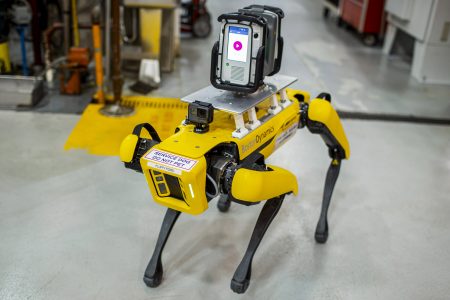
\
Ford’s new four-legged dog-like robots can sit, shake hands and roll over. However, more importantly, They can also perform 360-degree camera scans, handle 30-degree grades and climb stairs for hours at a time.
Part of a Ford manufacturing pilot program, at the Van Dyke Transmission Plant, designed to save time, reduce cost and increase efficiency. The two robots are being leased from Boston Dynamics. The robots are bright yellow, equipped with five cameras, can travel up to three miles per hour on a battery lasting nearly two hours.
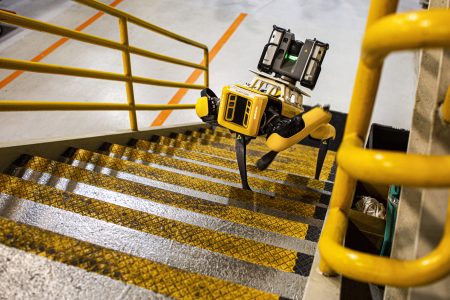 The robots will scan the plant floor and assist engineers in updating the original computer aided design, which is utilized when retool Ford plants.
The robots will scan the plant floor and assist engineers in updating the original computer aided design, which is utilized when retool Ford plants.
“We design and build the plant. After that, over the years, changes are made that rarely get documented,” said Mark Goderis, digital engineering manager, Ford. “By having the robots scan our facility, we can see what it actually looks like now and build a new engineering model. That digital model is then used when we need to retool the plant for new products.”
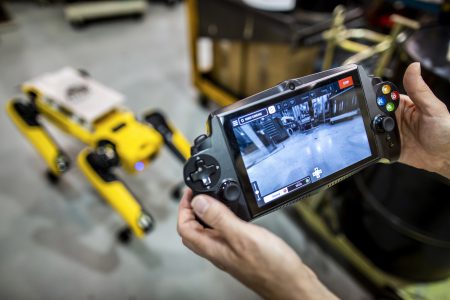 It costs nearly $300,000 to scan one facility. Ford’s manufacturing team hopes it can scan all its plants for a fraction of the cost.
It costs nearly $300,000 to scan one facility. Ford’s manufacturing team hopes it can scan all its plants for a fraction of the cost.
“We used to use a tripod, and we would walk around the facility stopping at different locations, each time standing around for five minutes waiting for the laser to scan,” Goderis recalls. “Scanning one plant could take two weeks. With Fluffy’s help, we are able to do it in half the time.”
The intent is to be able to operate the robots remotely, programming them for plant missions and receiving reports immediately from anywhere in the country. Right now the robots can be programmed to follow a specific path and can be operated from up to 50 metres away with the out-of-the-box tablet application.
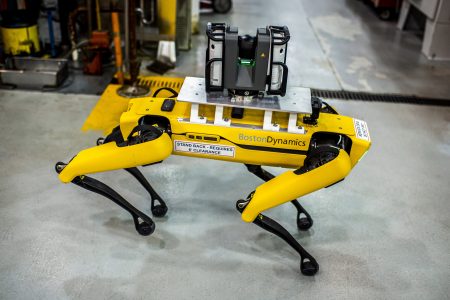 The robots have three operational gaits, a walk for stable ground, an amble for uneven terrain, and a special speed for stairs. They can change positions from a crouch to a stretch, which allows them to be deployed to difficult-to-reach areas within the plant. They can handle tough terrain, from grates to steps to 30-degree inclines. If they fall, they can right themselves. They maintain a safe, set distance from objects to prevent collisions.
The robots have three operational gaits, a walk for stable ground, an amble for uneven terrain, and a special speed for stairs. They can change positions from a crouch to a stretch, which allows them to be deployed to difficult-to-reach areas within the plant. They can handle tough terrain, from grates to steps to 30-degree inclines. If they fall, they can right themselves. They maintain a safe, set distance from objects to prevent collisions.

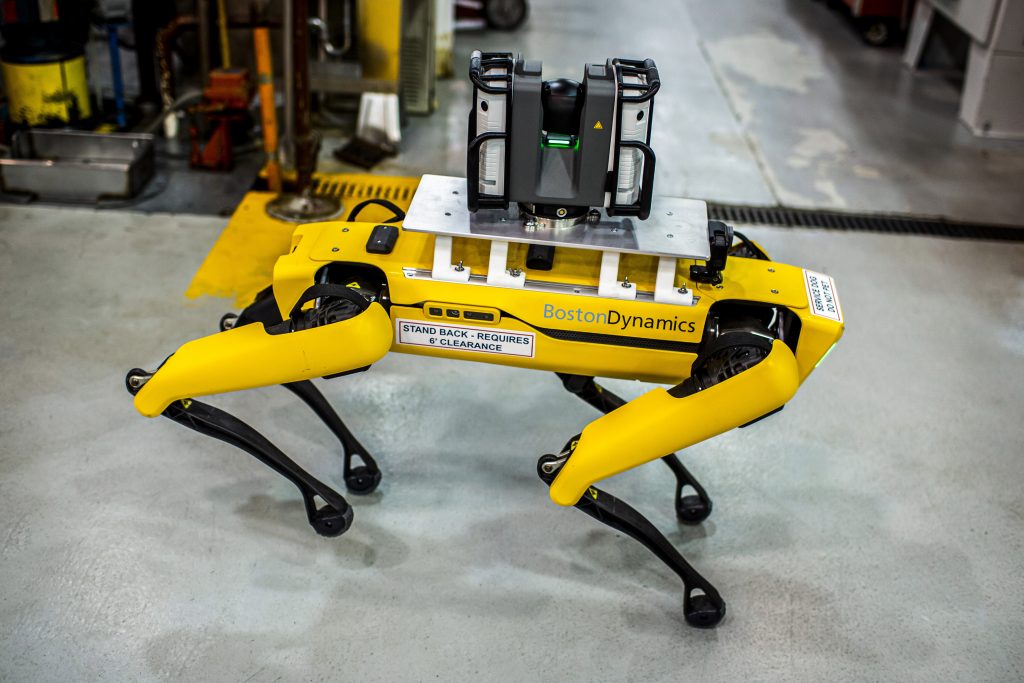 Photo: Ford.
Photo: Ford.